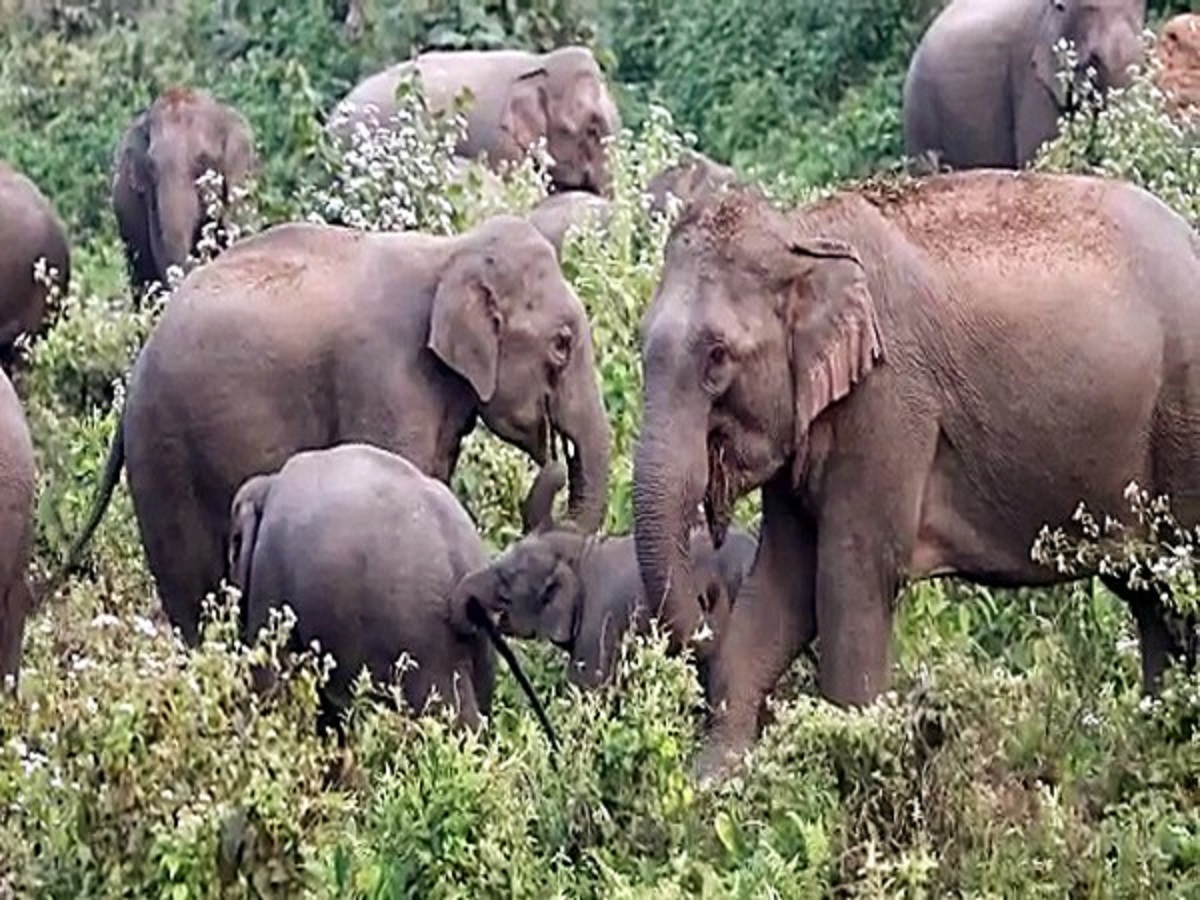Shrinking forests, increasing penetration of humans in the forest areas through expanding cultivation and tourist interaction is leading to man-elephant conflicts along the Terai region on the UP-Nepal border.
A “domesticated” tusker brought in to participate in a fair in Gorakhpur last month, suddenly turned aggressive and trampled three to death.
His caretaker later said that the elephant was “disturbed” by the loud music playing there.
Two — a man and a woman — were trampled to death by tuskers in Dudhwa last year.
A.N. Singh, a wildlife enthusiast, says: “Elephants are peace-loving animals who prefer to remain in their natural habitat. However, there has been deforestation in Dudhwa and Pilibhit regions and local people are expanding their cultivation areas by encroaching upon the forest, Elephants are being disturbed by the changing situation and their behaviour changes when people burst crackers and play drums to shoo them away. They turn aggressive.”
A senior forest official said that their foremost concern was to ensure that there is no repeat of the 2019 human-elephant confrontation when two wild tuskers killed five men after they strayed from their migratory path and reached Rampur via Bareilly and Pilibhit.
Another challenge is to protect the wild elephants from electrocution.
The Power Department had been told to repair all low hanging and faulty lines near forest areas and ensure transformers are installed at a height.
Farmers have been warned that an FIR would be registered against them if they do not remove electric fences around their cultivated fields.
The state government is also coordination with the Indian Railways to prevent accidents on rail tracks passing through the sanctuaries.
Physical barriers have been tried in the past with limited success in some states. The solution for this needs to be driven by technology that can enable an early warning system in combination with increased sensitization of locomotive pilots towards presence of elephants on tracks on known corridors.
Uttar Pradesh now has two elephant reserves — the recent one being the Terai Elephant Reserve (TER) at Dudhwa-Pilibhit area. The new Reserve, spread over 3,049 sq. km., will include protected areas, forest areas and corridors for conservation of wild elephants.
It will be almost four times bigger than the state’s first elephant reserve — Shivalik Elephant Reserve — which is spread over Bijnor and Saharanpur.
According to UP forest officials, a major problem in elephant management in state reserves is the migration of elephant herds from Nepal.
Herds of elephants come in from Nepal and destroy acres of tender paddy and sugarcane crops. The cultivated land is part of the corridor used by elephants since time immemorial to move between Nepal and India.
“Every year, at the onset of the monsoon, herds migrate from Nepal’s forests to Dudhwa. The elephants tend to become more aggressive if there are calves in the herd. Their protective instincts increase and even the slightest provocation makes them react dangerously,” said a retired forest official.
The Dudhwa tiger reserve (DTR) and Pilibhit tiger reserve (PTR) authorities have embarked upon an innovative plan that envisages peaceful cohabitation by promoting bee-keeping and using advanced technology.
The plan also encapsulates a coordinated strategy to promote the replacement of the sugarcane crop, which is a savoury food liked by jumbos, with some other remunerative crops.
Beehives have produced outstanding results in drastically reducing the intrusion of elephants in cropped fields and village habitations in East African countries.
“Researchers have found that the trunk’s tip of an elephant is extremely sensitive and goes through excruciating pain when stung by a bee. This makes elephants respond with alarm to the buzz of aggressive bees. They quickly move away from the sound source,” said the official.
“In addition, beekeeping has the additional advantage of producing honey, potentially diversifying and bettering the livelihoods of local communities. We have identified the villages and the training of beekeeping will be initiated there very soon,” he said.
In 2013, the formation of anti-depredation squads (ADS) on the periphery of Dudhwa Tiger Reserve, resulted in over 60 per cent drop in man-elephant conflicts in the area, officials said.
Citing a Worldwide Wildlife Fund (WWF-India) survey report, he said over 60 per cent reduction in human-elephant conflict cases was encouraging.
The idea of anti-depredation squad hit the Dudhwa authorities a few years back when migratory tuskers preferred to stay in the forests for prolonged periods, he said.
Their prolonged stay resulted in huge losses for forest villagers, as these herd of wild tuskers pounced upon their standing crops and destroyed their houses.
The ADS trained the villagers in elephant behaviour and ways to tackle them, ensuring their own safety.











